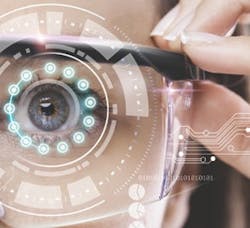Check out the AR/VR mini series
Plenty of new, old, familiar and semi-understood terms get tossed around in discussions about augmented and related realities. To get observers, developers and potential users on the same page, here are some consensus definitions of the most common terms:
- Augmented reality (AR) usually consists of digital 3D, CAD/CAM or other computer-generated graphics superimposed on images of physical equipment, production applications or other real-world environments. These graphics and their support software typically recognize physical items, or barcodes or QR codes on them, and provide supporting documentation, operating status or other useful data.
- Virtual reality (VR) is typically complete immersion of the viewer in a computer-generated environment that doesn't include real-world images or video, but has been used to simulate some physical operations or environments.
- Mixed reality (MR) combines elements of AR and VR, working in a real-world environment with non-real objects. For example, because users typically see the outside of most device but not inside, but MR lets them work on it by allowing them to view a digital rendering of its insides.
- X reality (XR) joins AR, VR, MR and physical reality to whatever proportion each is needed by users and their applications.
- Digital twin begins with a description of a physical device or system, which becomes increasingly complex until a model is developed that represents as many of the real item's characteristics as possible. This lets users input data, parameters and potential problems into the twin, test scenarios much faster then could be done in reality, show how the real-world counterpart will likely respond or operate, and make adjustments that can optimize the real device or system.
- Simulation includes using prior performance data or benchmarks, projecting what will happen in the future, and making proactive adjustments. These have progressed in sophistication and decreasing turnaround time from written reports to increasingly dynamic computerized and digital versions that can run in near real-time to the processes they're simulating.
About the author: Jim Montague




